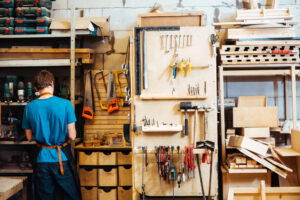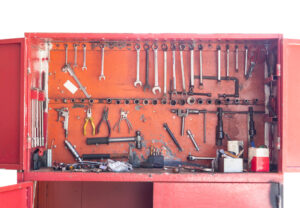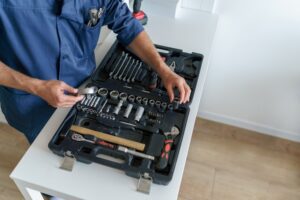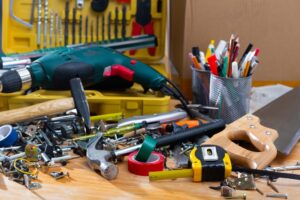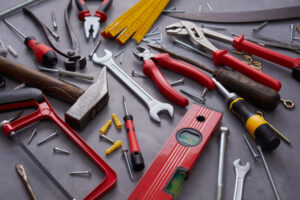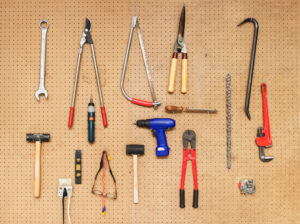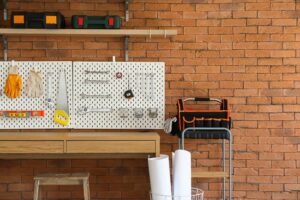When you first get into home renovation and woodworking, the number of speciality tools and devices you have to learn about can be overwhelming. Thankfully, tools like the coping saw are not rocket science, and once you know what a coping saw is used for, it makes much more sense.
A coping saw is predominantly used in trim carpentry to crown moulding together inside corners. It is an ideal tool for making exterior and interior cuts on wood or metals. However, it can still be used for a wide variety of tasks so long as you know how to use it properly.
That’s the basic story, but as any good handyman knows, tools can be useful for much more than their intended use. We’ll discuss what a coping saw is good at, how to use it, and more below.
What Is a Coping Saw Used for?
You might be familiar with the coping saw, as it is usually one of the first tools we pick up and try hands-on. Due to its short blade, it’s relatively safe for kids to try under supervision.
A coping saw is easy to use, and its versatility allows for great creations. In fact, the coping saw is the only tool that can give your work a professional finishing look. Its U-shaped steel frame holds a thin blade with the teeth of the blade pointing backwards.
The shape of the saw offers the ability to make curved and straight cuts on a variety of materials, ranging from wood and aluminium to steel and plastic. It’s often described as the most versatile tool under £20 (for a manual saw), and it will probably last you a lifetime.
When you install mouldings, the most challenging task is to cope with them together accurately. The coping saw is a handy tool to cut the pieces to achieve the most accurate cuts. But not only, but it’s also a great tool to make different shapes, complex cutting, and cutting holes in wood.
Because coping saws can be used on more than one material, it is advised to choose the right blade for the material for the final results to be optimal. All coping saws have knobs that make it easy to change between blades, and while some people use manual coping saws, most find electric versions more efficient.
Whether electric or manual, the scroll saw has an upper arm and a lower arm that each connects one end of the blade. The shape formed by the structure is a “U.” It is the depth of this shape that determines the maximum space that can be cut.
How to Use a Coping Saw
The scroll saw is not particularly difficult to use, even for non-handymen. If you are going on a power saw, be sure to wear eye protection and set your saw down on a flat, sturdy surface. Keep away objects that could get in your way during your work, as the saw will vibrate when on.
Use the Right Blade
The blade should be selected according to the material it is intended for, which can be wood, plastic, or soft metal.
While choosing the blade, keep in mind how thick the material will be. Smooth blades are usually preferred for thin precise cuts. The maximum thickness that can be cut with a coping saw is between 30 and 40 mm.
Adjust the Blade Tension
Make sure you adjust the tension of the blade. If the blade is too tight, it could break, but if it isn’t tight enough, it’ll move while you work.
An excellent way to tell if a blade is adequately adjusted is that it should move when you press on it and when you strum it, it should make a sound similar to a guitar string. The higher the sound, the tighter the blade is. The thicker your workpiece, the more tension on the blade will need to be increased. The best is to try by starting with a blade not too tight and adjust as you work.
Adjust the speed
The speed is that of the blade (top to bottom). The speed will influence the precision of the work. The lower the speed, the higher the precision. If you are used to the saw or if you are making straight cuts, you can increase the speed. When cutting, do not push the end of the blade excessively against your saw. Gently accompany your piece instead.
Home Decor Designs to Use a Coping Saw On
While you can use your coping saw for carpentry, it’s also a valuable tool to adjust and modify your furniture. While a coping saw is efficient and precise, it will most likely always need to be supplemented with other tools when used for more complex tasks; that is why it’s the perfect tool for home decor design.
In fact, you can use your coping saw to make decorative cutouts, decorative objects, and make various toys. Here are some ideas for your next creations:
- 3D puzzles– create your own 3D wooden puzzle for your family’s entertainment, something all will remember
- A wooden plaque– create a wooden plaque with your name on it. You can mount that piece to the wall.
- A state plaque— create a wooden plaque of your favourite country or state. It’ll make you look like a sophisticated traveller
- A family keyring hanger with everyone’s name– useful and very personal
- Wooden toothbrush holder— imagine waking up admiring your creation every day.
- Simple wooden toys for kids
Creating a cool design with a coping saw is very easy. Start by drawing the design on your wooden board. Once your drawing is complete, follow the exact line with your coping saw. A coping saw is a perfect tool to make unique and sophisticated patterns.
While creating your own designs is an incredible feeling, many people have ended up opening their own shops on websites such as Etsy and are selling their handmade designs all over the world. We’re at a time where everyone likes uniqueness, and what’s more unique than turning a piece of wood into a whole new design?
Should I Choose an Electric or Manual Coping Saw?
Now that you know a little bit about what they are and what they are used for, you might be thinking it’s about time you got one yourself.
Before you go out and buy the first one you see, let’s talk about the differences between manual and electric coping saws.
Manual coping saws, predictably, take much more effort to use. You have to provide all the cutting power yourself. However, in exchange for this, you also have much more control and flexibility when cutting out parts.
Electric coping saws still have their uses, though. For those who have larger projects, physical limitations, or just don’t want to break a sweat, then an electric coping saw can provide the efficiency and ease of use they are looking for. It is, however, more limited and more expensive.
In the end, though, for most home projects, a manual coping saw will work just fine, and you don’t need to spend the money on an electric tool.
Coping Saws: A Roundup
Whether you need to do heavy home improvements or detailed designs, a coping saw is your go-to hand tool. It’s easy to use even for the non-experienced and is one of the most versatile tools to have.
But be aware, owning a coping saw might very well turn you into the most in-demand neighbour in your community!
Sources:
https://www.bobvila.com/articles/494-the-coping-saw/
https://www.familyhandyman.com/article/coping-saw/
The Humble, Essential Coping Saw
https://www.woodsmith.com/article/perfect-cuts-with-coping-fret-saws-coping-saw/
- Drill Battery Maintenance: Essential Tips for Cordless Drill Battery Care - February 5, 2024
- Troubleshooting Drill Issues - February 5, 2024
- Quick Drilling Techniques - February 2, 2024

